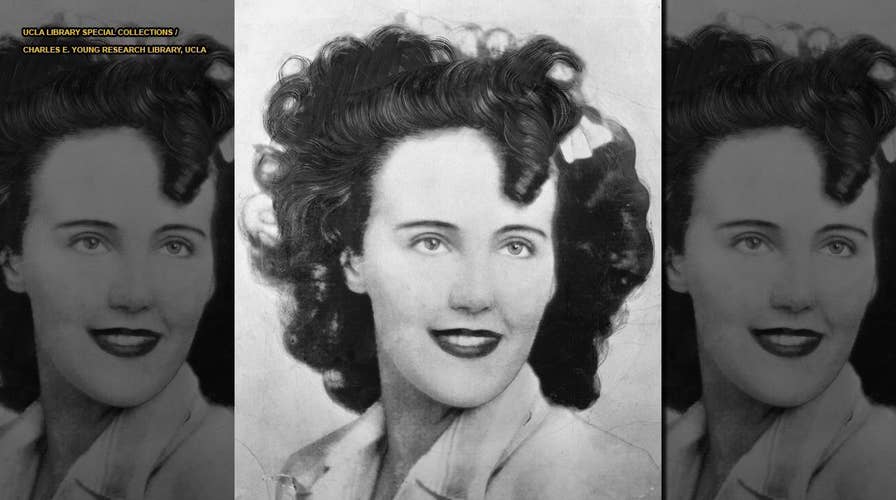The Black Dahlia case stands as one of the most haunting and unsolved crimes in American history. The tragic murder of Elizabeth Short, a young woman whose life was cruelly cut short, left an indelible mark on the nation. This chilling story continues to captivate true crime enthusiasts and investigators alike, drawing attention to the case's intricate details and the enduring mystery that surrounds it.
Elizabeth Short, later immortalized as "The Black Dahlia" by the press due to her preference for black clothing and the grim nature of her death, was discovered brutally murdered on January 15, 1947. Her body was found in a vacant lot in Leimert Park, Los Angeles, shocking the city and the world. The case became a media spectacle, drawing attention not only because of the grisly circumstances but also due to the exhaustive investigation that ultimately failed to bring justice. This article explores the historical context, the investigative process, and the lingering questions that continue to intrigue those who study this infamous murder.
Table of Contents
- The Life and Times of Elizabeth Short
- The Gruesome Discovery of the Black Dahlia
- The Investigation: Challenges and Leads
- The Media Sensation and Public Reaction
- Forensic Evidence: Past and Present
- Unraveling the Mystery: Suspects and Theories
- Understanding the Mind of the Killer
- Modern Advancements and Technological Breakthroughs
- The Cultural Legacy of the Black Dahlia
- Final Thoughts and Reflections
The Life and Times of Elizabeth Short
Early Life and Personal Background
Elizabeth Short was born on July 29, 1924, in Boston, Massachusetts, as the second of five daughters in her family. Her early years were marked by frequent relocations, driven by her father's involvement in various business ventures. Below is a summary of her personal details:
Read also:Discover The Iconic Stanford Tree A Symbol Of Resilience And Tradition
| Full Name | Elizabeth Short |
|---|---|
| Nickname | The Black Dahlia |
| Date of Birth | July 29, 1924 |
| Place of Birth | Boston, Massachusetts |
| Date of Death | January 15, 1947 |
Throughout her life, Elizabeth traveled extensively across the United States, working various jobs and forming connections with people from all walks of life. Her magnetic personality and charm left a lasting impression on those she encountered, making her a memorable figure even in the brief time she spent in their lives.
The Gruesome Discovery of the Black Dahlia
The Chilling Morning of January 15, 1947
On the morning of January 15, 1947, a harrowing discovery was made in a vacant lot in Leimert Park, Los Angeles. A woman walking her dog stumbled upon the mutilated remains of Elizabeth Short. The scene was both shocking and disturbing, with Elizabeth's body found severed at the waist and her face grotesquely disfigured. Key details of the crime scene included:
- The body was positioned unnaturally, suggesting a deliberate arrangement.
- The precision of the cuts indicated the possibility of medical expertise or familiarity with anatomy.
- Her face bore deep slashes on either side of the mouth, creating what is often referred to as a "Glasgow smile."
- Surprisingly, no blood was found at the scene, leading investigators to believe the murder did not take place there.
The Investigation: Challenges and Leads
In the wake of the discovery, the Los Angeles Police Department launched a comprehensive investigation. Detectives meticulously combed through potential leads, interviewing hundreds of witnesses and following countless threads. However, despite their efforts, the case remained unsolved. The investigation was hampered by several challenges:
Obstacles Faced by Investigators
- A lack of eyewitness accounts left investigators without direct insight into the crime.
- The absence of a clear motive made it difficult to narrow down the list of suspects.
- Identifying the method of transportation used by the killer proved elusive, further complicating the case.
The Media Sensation and Public Reaction
The Black Dahlia case quickly became a national phenomenon, capturing the attention of media outlets across the country. Reporters coined the nickname "Black Dahlia," inspired by Elizabeth's choice of dark clothing and the enigmatic nature of her death. The public's reaction was a mix of horror and fascination, as they grappled with the senseless brutality of the crime.
Impact on the True Crime Genre
The Black Dahlia case laid the foundation for the modern true crime genre, inspiring countless books, films, and documentaries. It highlighted the public's enduring fascination with unsolved mysteries and the darker aspects of human behavior, cementing its place in popular culture.
Forensic Evidence: Past and Present
At the time of the murder, forensic science was still in its infancy. Nevertheless, investigators managed to gather critical pieces of evidence, including fingerprints, hair samples, and biological materials, which were preserved for future analysis. Advances in technology have allowed modern investigators to revisit the case with new tools and techniques.
Read also:Discover Your Perfect Home Near Morgan Metro
Modern Forensic Techniques
Advancements in DNA profiling, facial reconstruction, and digital archiving have revolutionized criminal investigations. While these innovations have not yet solved the Black Dahlia case, they offer hope for future breakthroughs, providing a glimpse into the potential for resolving long-standing mysteries.
Unraveling the Mystery: Suspects and Theories
Over the years, numerous suspects and theories have emerged, each attempting to shed light on the identity of the killer. Some of the most prominent suspects include:
- Walter Bayley: A physician with a history of erratic behavior, raising suspicions among investigators.
- George Hodel: A Los Angeles doctor implicated by his own son, adding another layer of intrigue to the case.
- Mark Hansen: An acquaintance of Elizabeth's with a questionable alibi, making him a person of interest.
Unsubstantiated Claims and Speculation
While many theories have been proposed, none have been definitively proven. The lack of concrete evidence, combined with the passage of time, makes it increasingly unlikely that the true identity of the killer will ever come to light. However, the case continues to inspire speculation and debate among enthusiasts and experts alike.
Understanding the Mind of the Killer
Experts have attempted to construct a psychological profile of the Black Dahlia killer based on the nature of the crime. Common traits attributed to the perpetrator include:
- High levels of psychopathy, suggesting a lack of empathy or remorse.
- Obsessive tendencies, indicating a fixation on Elizabeth or the act itself.
- Knowledge of anatomy or medical procedures, pointing to a possible background in medicine.
Behavioral Analysis
Behavioral analysts posit that the killer likely had a personal connection to Elizabeth, whether known or unknown to her. The meticulous planning and execution of the crime suggest a desire for control and a calculated approach to the act.
Modern Advancements and Technological Breakthroughs
In the decades since the Black Dahlia murder, significant progress has been made in the fields of technology and forensic science. Cold case units now employ cutting-edge tools to reexamine unsolved cases, offering new possibilities for resolution.
Technological Innovations
Technologies such as DNA profiling, facial reconstruction, and digital archiving have transformed the landscape of criminal investigations. While the Black Dahlia case remains unsolved, these advancements provide a foundation for future discoveries, giving hope to those who seek answers.
The Cultural Legacy of the Black Dahlia
The Black Dahlia case has left an indelible mark on popular culture, inspiring countless works of art, literature, and film. Its influence is evident in the true crime genre, which continues to captivate audiences worldwide, highlighting the enduring fascination with unsolved mysteries.
Why the Black Dahlia Endures
What is it about the Black Dahlia case that continues to captivate people? The combination of beauty, tragedy, and mystery resonates deeply with the human psyche, reminding us of the fragility of life and the complexity of human nature. This case serves as a poignant reminder of the enduring power of mystery and the search for truth.
Final Thoughts and Reflections
The Black Dahlia crime scene remains one of the most enigmatic and haunting cases in criminal history. Despite extensive investigations and modern advancements, the identity of the killer remains shrouded in mystery. The case serves as a stark reminder of the limitations of human knowledge and the enduring power of unsolved mysteries.
We invite you to share your thoughts and theories in the comments below. For those eager to learn more about the Black Dahlia case, we recommend exploring the wealth of resources available online and in libraries. Together, we can continue the quest for truth and justice.
References:
- FBI Crime Records
- Los Angeles Police Department Archives
- True Crime Magazine
- Historical Crime Databases



